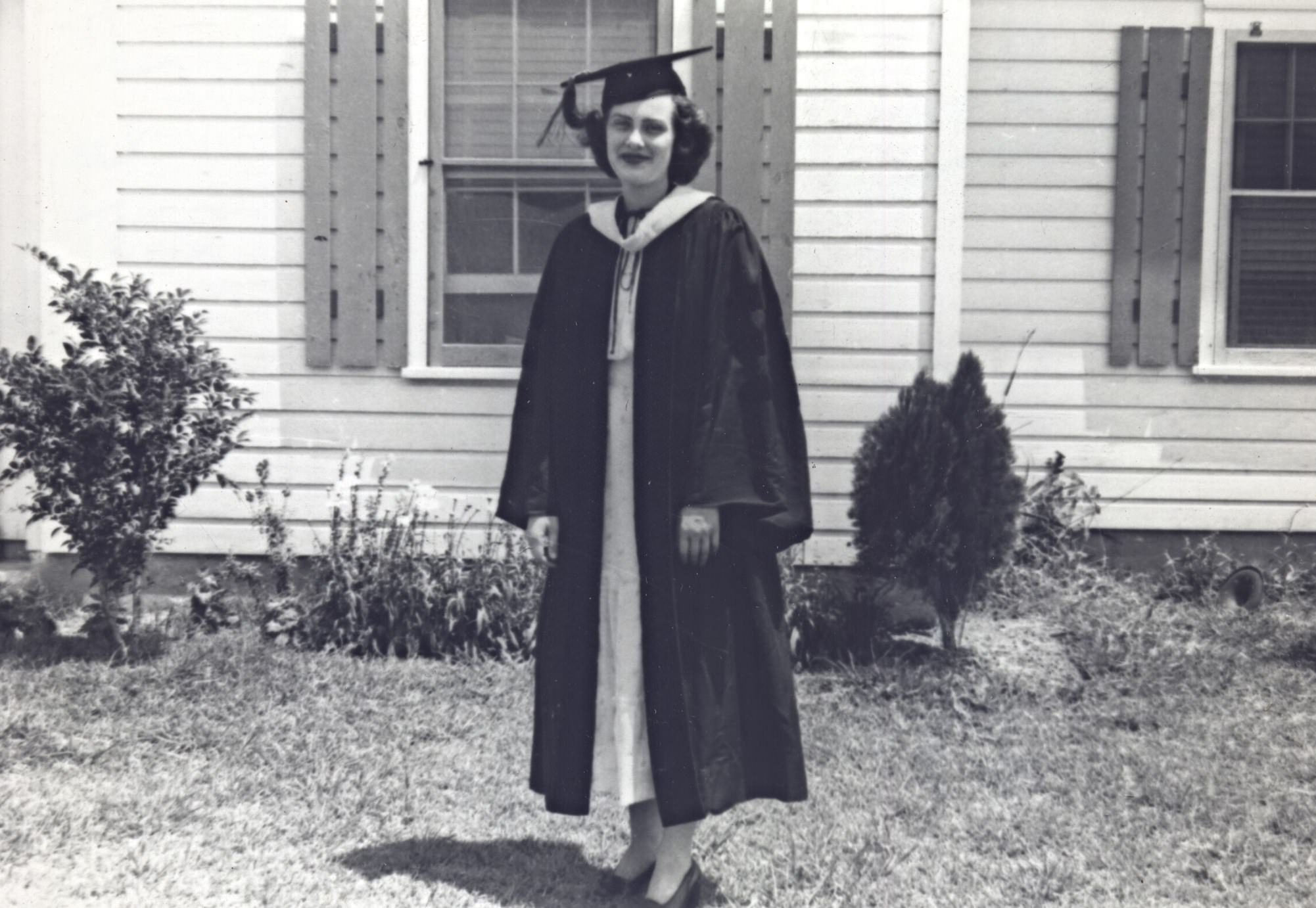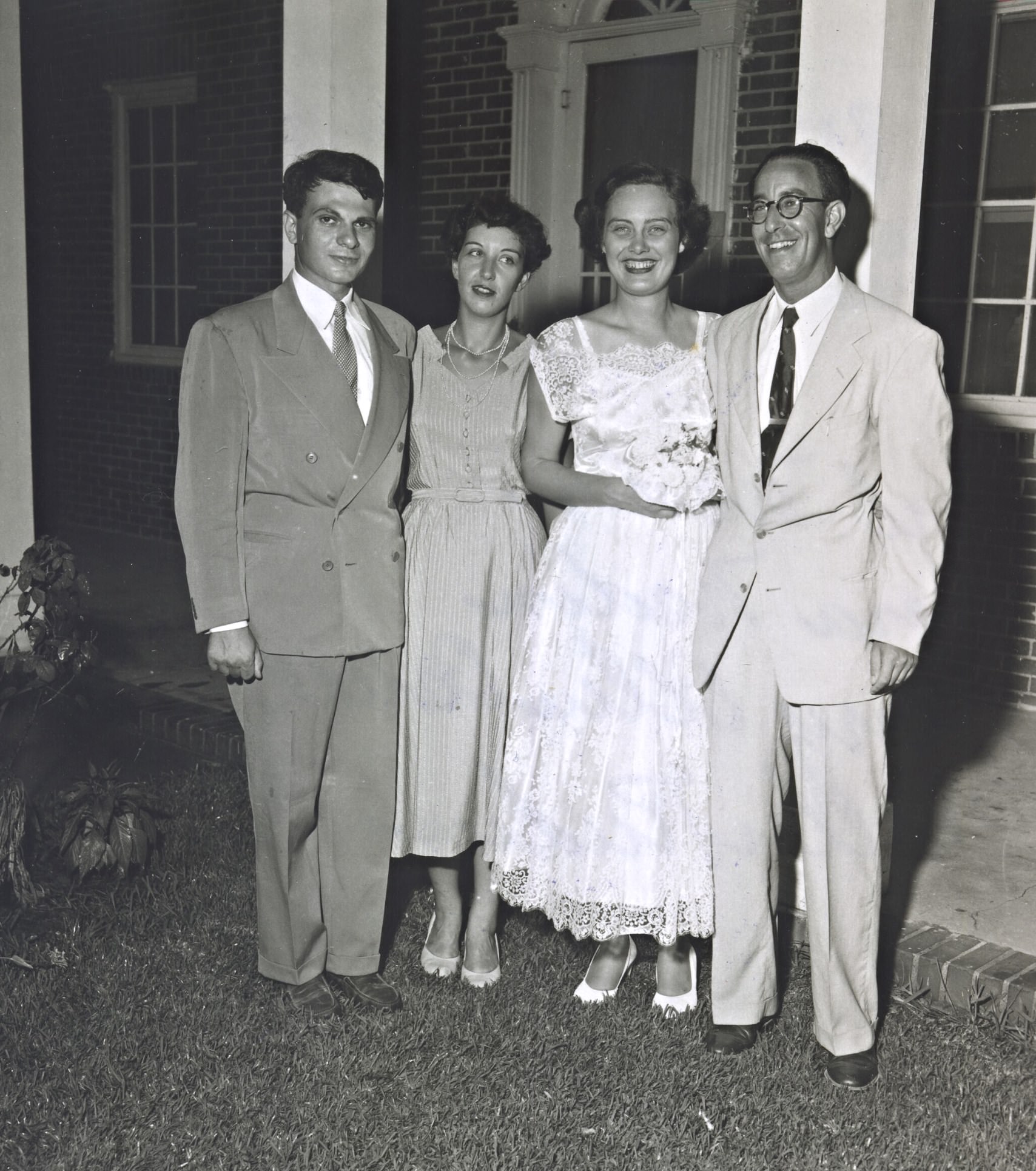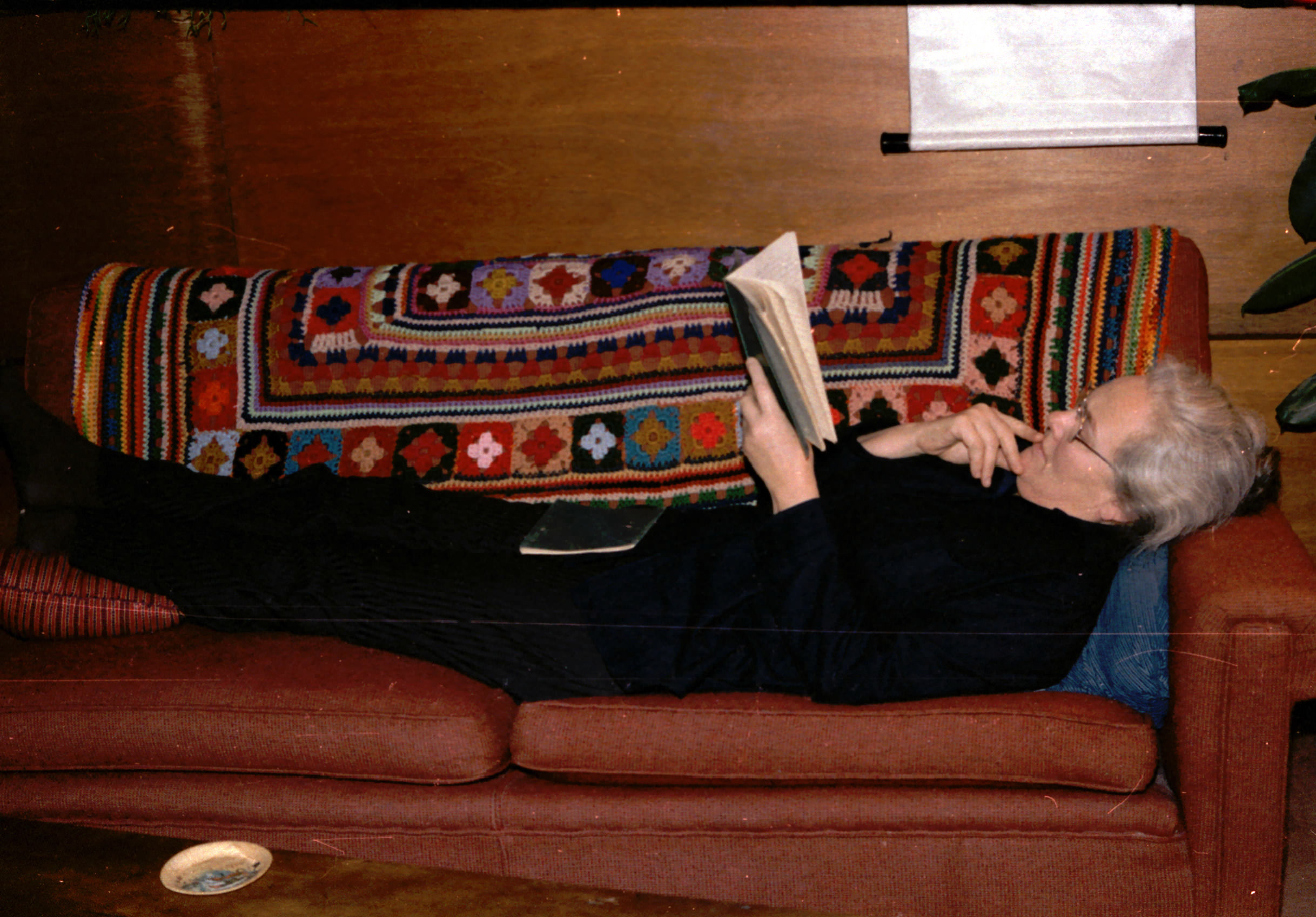by Georgia Benkart
Mary Ellen Estill Rudin, Grace Chisholm Young Professor Emerita of Mathematics at the University of Wisconsin–Madison and preeminent set-theoretic topologist, died at her home in Madison, Wisconsin, on March 18, 2013. Mary Ellen was born December 7, 1924, in Hillsboro, Texas, south of Dallas–Fort Worth, a small town whose roster of notable natives also includes Madge Bellamy, a film actress of the 1920s and 1930s best known for the horror movie classic White Zombie.
When she was six, Mary Ellen’s family moved to the even smaller town of Leakey (LAY-key) situated in the Texas hill country in a canyon carved out by the Frio and Nueces Rivers. Her mother, Irene Shook Estill, had taught high school English. Her father, Joe Jefferson Estill, was a civil engineer with the Texas Highway Department, and the family had moved around as his projects dictated until, soon after their arrival at Leakey, the Depression hit. As there was no money to build new roads, the family stayed there throughout Mary Ellen’s school years while her father did surveying work. Her brother, Joe Jefferson Estill Jr., was ten years younger; the two siblings always got along famously despite their age difference. In those days, reaching Leakey from the outside world required traveling fifty miles up a one-lane dirt road and fording the Frio River seven times. Children walked to school or rode there on horseback.

In 1941 Mary Ellen was one of five graduates in her high school class. That fall she headed off to Austin to enroll at the University of Texas and was directed to the table with the shortest line of prospective students, where Robert L. Moore sat registering students for mathematics courses. Impressed with her correct usage of “if/then” and “and/or,” Moore signed Mary Ellen up for a trigonometry course. She was surprised to discover the next day that he was the professor for the class. Every single semester during her entire eight years at the University of Texas, from day one until she graduated with her doctoral degree in 1949, she attended a course taught by Moore [e3]. Moore’s method of teaching, which eschewed formal lectures, instilled in Mary Ellen a lifelong deep confidence in solving problems and conjectures, though she never used the method in her own teaching. As she later put it in an interview with Albers and Reid [e1], at the end of her freshman calculus course, “I’m not sure I knew the derivative of \( \sin x \) was \( \cos x \), but I could prove all sorts of theorems about continuity and differentiability and so on!” Mary Ellen often bemoaned the fact that she knew so little mathematics and felt cheated that she had not been exposed to basic subjects such as algebra and analysis.
At Texas she was a member of a terrific cohort of Moore graduate students, including Richard Anderson, Ed Burgess, R. H. Bing, and Edwin Moise, that went on to shape general topology and leave its mark on the mathematical community. In her doctoral thesis, Mary Ellen constructed a counterexample to a well-known conjecture using a technique now called “building a Pixley–Roy space” after the two mathematicians who later gave a more simplified description of it. At the time she wrote her thesis, she had never read a single mathematics paper. She maintained an aversion to reading research papers throughout her career, loved talking about mathematics and sharing her bounty of ideas with anyone who would listen, and was an avid colloquium goer (but always with pencil and paper just in case her interest in the subject waned).

After Mary Ellen earned her PhD in 1949, Moore referred her to Duke University, which then had a women’s college under pressure to hire a female mathematician. At Duke she met Walter Rudin. Walter had arrived there in 1945 from England, where he had spent the war years in the Royal Navy after fleeing Austria. Having convinced a dean that he should be admitted as a junior even though he had never finished high school, four years later, in 1949, Walter completed his PhD. He left Duke in 1950 for a two-year C. L. E. Moore Instructorship at MIT and following that for the University of Rochester, but Mary Ellen and Walter continued to see each other at the winter and summer Joint Mathematics Meetings. In August 1953 they were married at the home of her parents in Houston. While at Duke, Mary Ellen proved a conjecture of Raymond Wilder, an early Moore student, and Wilder applied for an NSF grant to enable her to visit him at the University of Michigan. When she wired Wilder that she was getting married and going to the University of Rochester, somehow he managed for the grant to be transferred from Michigan to Rochester. The University of Rochester came up with a part-time position for her on short notice, and she continued her research. Daughter Catherine arrived in July 1954, and daughter Eleanor in December 1955, so part-time teaching suited the newly expanded family.

The Rudins were on leave from Rochester visiting Yale for the academic year 1958–59 when R. H. Bing phoned Walter to invite him to give a summer course at the University of Wisconsin. Walter declined because he already had Sloan Fellowship funding for the summer but heard himself asking, “But how about a real job?” [e2]. Bing, who was mathematics department chair at the time, arranged an interview a few weeks later. In 1959 the Rudin family moved to Madison and purchased a recently built home designed by Frank Lloyd Wright that consisted of basically one large room with 14-foot ceilings and a huge number of windows (rumored to be 137). Sons Robert (Bobby)1 and Charles (Charlie) were born in Madison in 1961 and 1964. Although Walter retreated to the quiet of his study to do mathematics, Mary Ellen described her own mode of work as “I lie on the sofa in the living room with my pencil and paper and think and draw little pictures and try this thing and that thing….It’s a very easy house to work in. It has a living room two stories high, and everything else opens onto that….I have never minded doing mathematics lying on the sofa in the middle of the living room with the children climbing all over me” [e1].
Madison turned out to be exactly the right kind of place for them — the right kind of city and the right kind of mathematics department [e2]. Mary Ellen continued as a part-time lecturer who supervised graduate students and engaged in essentially full-time research until 1971, when, in Walter’s words [e2], “The anti-nepotism rules, which were actually never a law, had fallen into disrepute,” and she was promoted from part-time lecturer to full professor. Mary Ellen was somewhat dubious about the professorship because of the teaching and committee work it entailed, but Walter felt it was best, especially for the children, in case something should happen to him. One of my earliest recollections of Mary Ellen is sharing an elevator with her in the mid-1970s, where she showed me a printout with the small retirement sum she had accumulated since coming to Wisconsin, a reality check the ever-expanding ranks of adjuncts and part-timers teaching mathematics today are also bound to face.
Mary Ellen was known for her extraordinary ability to construct ingenious counterexamples to outstanding conjectures, many quite complicated. She was the first to construct a Dowker space, thereby disproving a long-standing conjecture of Hugh Dowker that such spaces couldn’t possibly exist. Years before this noteworthy accomplishment, in 1963 her solution to one of the Dutch Prize Problems had been recognized by the Nieuw Archief voor Wiskunde (the Mathematical Society of the Netherlands). In later years she was named a Fellow of the American Academy of Arts and Sciences and of the American Mathematical Society, became a member of the Hungarian Academy of Sciences, and received four honorary Doctor of Science degrees. She gave an invited lecture at the International Congress of Mathematicians in Vancouver in 1974 and the Noether Lecture of the Association for Women in Mathematics at the Joint Mathematics Meetings in 1984. In 1990 she was awarded the R. H. Bing Prize for significant overall contributions to mathematics. She served as vice president of the AMS 1980–81; as MAA governor 1973–75; and on a vast number of AMS, MAA, and national committees, including the editorial boards of the Notices and of Topology and its Applications. Perhaps ironically, she chaired the AMS Committee on Academic Freedom, Tenure, and Employment Security. In her honor, Elsevier established the Mary Ellen Rudin Young Researcher Award Fund to celebrate her achievements and to recognize her legacy in encouraging talented young researchers in topology. This award was formally announced at the 47th Spring Topology Meeting a week after her death, though she had given her approval of it earlier. The inaugural prize was awarded in September 2013 to Logan C. Hoehn of Nipissing University, Canada, a mathematical descendant of Mary Ellen.
Mary Ellen never stopped thinking about mathematics and working on problems. She was a mainstay of the Southern Wisconsin Logic Colloquium and couldn’t wait to tell me about her “fabulous weekend” when the colloquium hosted the Association for Symbolic Logic meeting in April 2012. The talks were fantastic, she reported; she met lots of old friends and, of course, participated in all the social gatherings.

The Rudins welcomed mathematicians, Wright aficionados, and students from all over the world to their unique home. The door was always open — literally; it was never locked. As Mary Ellen once said to me, “People just open the door and say ‘Hello, we’re here.’ ” To which daughter Catherine quickly added, “And most of the time we know them.” The Rudins entertained often and hosted everyone with a gracious, relaxed style. I remember a Thanksgiving when, with her customary cheerfulness, Mary Ellen announced to the gathering that dinner would be delayed, as the turkey, which was being cooked outside because the oven wasn’t working, had been on fire.
Mary Ellen was larger than life, and her reputation for rescues almost as legendary as her counterexamples. On more than one occasion she saved a child from the deep end of a pool or from crashing ocean waves. At an AMS summer mathematics institute in Colorado, a horse suddenly took off at a gallop, with the young rider who had slipped from the saddle dangling off to one side. Mary Ellen charged after them on horseback, corralled the runaway horse, and righted the girl, the daughter of the Rudins’ longtime friend Yale mathematician Shizuo Kakutani, Michiko Kakutani, now a Pulitzer Prize-winning literary critic for the New York Times.
For well over twenty years, except for the five years that Linda Rothschild was in the department, Mary Ellen and I were the only women mathematics faculty members at Wisconsin. Mary Ellen’s passion for mathematics was contagious, her support and encouragement to all extraordinary. She meant so much to so many; it was inspiring to be a part of her remarkable life. She was so accepting, so warm and welcoming, so genuine, so fiercely independent. She would never think to tell any of us that she had been taken to the hospital by ambulance in the middle of the night, except when it occurred to her she had left the house in just her nightgown with no shoes or money and no way to get back home. After Walter’s death, several of us would get together regularly for dinner, and she would want to drive. “We’ll pick you up,” I’d tell her. “Oh, ok,” she would reply. “I’ll be ready”. And she always was.